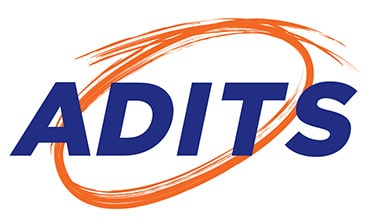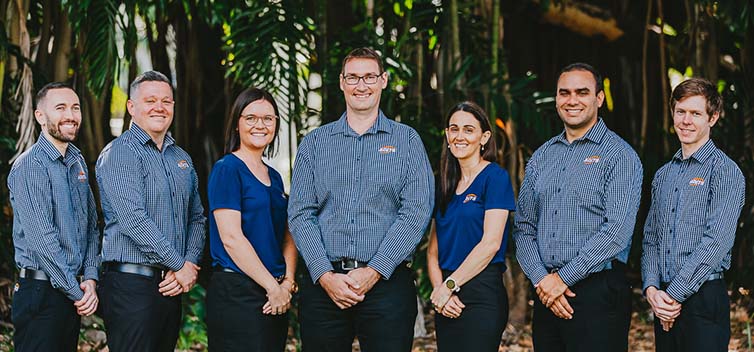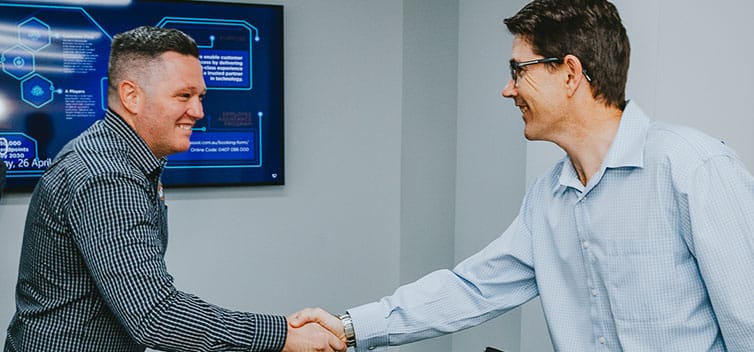The workplace has undergone a seismic shift with the adoption of flexible work setups. Gone are the days of rigid, office-bound schedules for a significant portion of businesses.
“The increase in hybrid or remote working represents one of the largest changes in Australian workplaces in generations” reported the Australian HR Institute, citing that 24% of organisations expect remote working arrangements to increase until 2025.
This trend presents both opportunities and challenges for Australian organisations. The good news is that IT support has evolved dramatically alongside this shift. We have seen its transformation from a reactive, problem-solving role to a proactive, strategic enabler of remote work success.
Traditional IT Support vs Managed IT: From Patchwork to Powerhouse
Imagine juggling a dozen laptops spread across the state, each with its own software updates, security vulnerabilities, and user quirks. That’s the reality faced by many businesses, especially when strapped for resources, like Queensland nonprofits or smaller medical practices.
Traditional break-fix IT support has had its advantages in time, but it’s like playing whack-a-mole: You’re constantly reacting to issues instead of preventing them. Plus, you’re bound to spend more in the long run, slowly draining your resources. We explain this in detail in our article, Managed IT Services: The Smart Way to Escape the Break-Fix Money Pit.
Enter Managed IT Services: a comprehensive approach that acts as an extension of your internal IT team. Managed IT provides proactive maintenance, remote monitoring, and strategic planning. With it, your IT can be constantly optimised, allowing your team to focus on core activities.
Remote Work Risks and Mitigation Strategies
Having a productive remote workforce is awesome, but there are still some security concerns associated with it. Here’s a breakdown of the key risks and how managed IT services can help:
Managing Remote Access & Data Transmission
Ensuring security for remote access is vital, with employees accessing data from home networks. A managed IT provider can implement Virtual Private Networks (VPNs) that encrypt data in transit. VPNs become the secure tunnels that connect remote user devices and your organisation’s network.
This way, John, a doctor at a regional Queensland medical practice who needs to access a patient’s confidential file outside of his office can safely collaborate with colleagues, regardless of location.
Managing Risks in Remote Devices & Networks
Unsecured home Wi-Fi networks and personal laptops also pose grave security risks. Managed IT providers with cyber security expertise can implement endpoint security solutions that monitor, patch vulnerabilities, and prevent malware infections on remote devices. Additionally, they can educate your employees and provide guidance on secure home network practices.
Managing Human Risk: Employee Training and Awareness
The strongest cyber security and IT solutions can’t replace a strong human defence. This is why technology providers can provide employee training programs to educate staff about threats and cyber security best practices. Properly trained and equipped employees can be your most powerful allies in the cyber war.
Cloud Solutions: Your Remote Work Toolkit
The key to remote work success lies in accessibility and seamless collaboration. Here are some cloud-based IT solutions that can be handy:
Remote Monitoring & Management (RMM) Tools
How can you diagnose and troubleshoot IT issues on remote devices instantly? RMM tools can be implemented as part of your managed IT services agreement, providing remote access for IT professionals. This enables them to support staff and address problems as quickly as possible.
Picture this: An NFP social worker’s Incident Management app doesn’t want to connect and they’re unable to do their reporting as required by their industry. Traditionally, this would mean waiting for an IT technician or risking a DIY fix. With an RMM tool, the managed IT provider is immediately alerted, so they can remotely diagnose the issue and fix it within minutes.
Collaboration Platforms
Tools like Microsoft Teams elevate the way remote teams work together. These platforms often come with integrated communication tools such as chat, video conferencing, and document sharing. They can thus build a sense of connection and improve productivity even when staff are geographically dispersed.
Imagine a team of architects at a Townsville business aiming to brainstorm design ideas for a new project. Traditionally, this might involve scattered emails and clunky conference calls. But with a collaboration platform, the architects can hold interactive video meetings, share design plans in real-time, and chat instantly to discuss changes. This nurtures a sense of connection and collaboration, while keeping the project moving smoothly even though the team members are all working remotely across Queensland.
The Future of Flexible Work: AI and Beyond
The future of IT support is brimming with exciting possibilities with the increasing role of Artificial intelligence (AI) in the workplace. From automated ticketing systems and predictive maintenance to chatbots and virtual assistants, the integration of AI and automation in IT support processes leads to faster issue resolution, improved efficiency, enhanced security, and a better overall user experience.
However, amidst all technological advances is the constant need to improve cyber security measures. As remote work keeps evolving, so do the risks we face. You must stay vigilant, adapting innovative IT strategies for a more secure and productive work environment.
Empowering Your Queensland Workforce
The shift towards remote work presents an opportunity for organisations to expand talent pools, improve employee satisfaction, and drive business agility. By embracing a proactive approach to IT support and adopting managed IT services, you can empower your remote workforce to be as productive, if not more, as if they were in the office.
If you want to thrive in this flexible work era, you need to transform your IT infrastructure and processes to reflect that. Find out more about ADITS proven process where we prioritise understanding your needs first so our partnership is customised.


